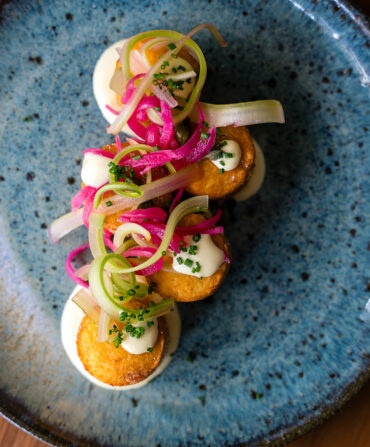Growing up in Dallas, Mike Shine watched his Pepaw dip bread and biscuits in what looked like molasses and wash it down with black coffee. Today, the chef and founder of Texas Food Group, a restaurant consulting company, knows the sweet stuff was Steen’s Syrup, a ubiquitous ingredient in Cajun and Creole cooking and one he often showcases at his own restaurant, Frank’s Americana Revival & White Star Bar in Houston.

“So much of our menu at Frank’s is rooted in dishes that America has long enjoyed or used to eat in our homes or grandma’s house but cannot find on restaurant menus any longer,” he says. “The use of Steen’s is a nod to the past. In some ways, it’s an early farm-to-market ingredient.”
The product dates to 1910, when Charley Steen’s sugarcane crop faced an early winter freeze in South Louisiana. He built a small mill to salvage the crop by turning it into pure cane syrup. Twenty years later, a larger facility spilled sugary aromas around Abbeville, Louisiana, and today, Steen’s signature yellow can is recognized all around the South. The fourth generation of the Steen family still runs the C. S. Steen Syrup Mill.

Shine prefers Steen’s over molasses due to its more concentrated, slightly earthy and nutty flavor. “It has a toasty finish as if it was roasted or something,” he says. “It’s always a good fit to give the recipe just the right semi-sweetness and color enhancement.”

At Frank’s Americana, Shine uses three gallons of Steen’s a week in more than fifteen menu items—collard greens, root beer red-eye gravy, jalapeño corn grits, and grilled Texas quail over wild rice and mushroom stuffing. He makes a Steen’s syrup vinaigrette to drizzle over blackened Creole snapper as well as fried green tomatoes, allowing acidity to mingle with the sweetness. And at home, Shine pours it over buttermilk biscuits, just like his Pepaw did.








